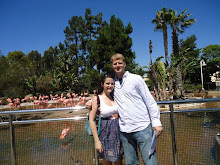However, I always deeply enjoy children's picture books that tell the story mainly through the pictures that are present. They make read alouds and sharing a book with a child who can not read yet easier. The way this book is constructed lends itself to teaching lessons with predictions to young students who have not completely mastered reading yet. There is also a obvious moral lesson here: taking someone else's stuff is wrong.
Friday, May 10, 2013
This is Not My Hat
What Do You Do When Something Wants To Eat You?
Monsters Eat Whiny Children
The monster debates with family members over a whiny-child salad, a whiny-child burger, a whiny-child cake or a whiny-child vindaloo. Not to be a spoil sport, but, buy the time the settle on whiny-child cucumber sandwich, Henry and Ever are gone, "never" to whine again.
The drawings are simple and entertaining, and the monsters are not scary looking. I think children would be entertained by this tale and adults would find humor in the fact that the monsters are pretty whiny themselves.
One Cool Friend
Thursday, May 2, 2013
Second Helpings
 I might be addicted to Jessica Darling and her wit. I find her deeply engaging and entertaining and that might be why I have finished reading this second book, Second Helpings, by Megan McCafferty so quickly. Jessica Darling is perhaps one of the most likable characters in all of young adult chick-lit; yes she is flawed and makes some very poor decisions in Second Helpings. We all have lessons to learn from her mistakes.
I might be addicted to Jessica Darling and her wit. I find her deeply engaging and entertaining and that might be why I have finished reading this second book, Second Helpings, by Megan McCafferty so quickly. Jessica Darling is perhaps one of the most likable characters in all of young adult chick-lit; yes she is flawed and makes some very poor decisions in Second Helpings. We all have lessons to learn from her mistakes.
I think I enjoy reading things from Jessica's point of view so much because I once was just like her and I identify with her problems. I was a senior in high school just like Jessica on September 11th. I struggled with finding a healthy way to react to the event. I wanted to fit in and be part of something, but not by running Cross Country, a sport which my father thought I enjoyed, just like Jessica's father. I was filled with angst over my college acceptance and hated my mailman just like Jessica. However, the fact that Jessica can still be true to herself as a best-selling book and movie based on that book become big money makers, her very pregnant sister moves back in the house, her grandmother struggles after a second stroke and Marcus Flutie is still messing with her, proves that this book provides young readers with a good role model- even though she makes some pretty big mistakes.
I believe that I mentioned that first book addressed common teen issues like sex, drinking, drugs, and the peer pressure to participate in the the activities related to sex, drinking, and drugs. Thus, this book is for mature high school students.
Frank Lloyd Wright and His New American Architecture
In Frank Lloyd Wright and His New American Architecture, I learned a great deal about the life of Wright, his inspirations, and his struggles. I felt like some of the more dirty aspects of Wright's life were hinted at, but readers were focused more on accomplishments, like building a 600 room hotel that could survive one of the greatest earthquakes in Japanese history. The Martin House is not mentioned in the discussion of Prarie architecture, but there is extensive discussion of the Robie House, which is similarly designed, but in Illinois. The book also follows all of the conventions of non-fiction by including a table of contents, glossary, timeline, further reading and even reading group activities.
Both the Badger Biography Series and Frank Lloyd Wright and His New Merican Architecture are thoughtfully crafted to inform students in a constructive way.
Subscribe to:
Comments (Atom)



